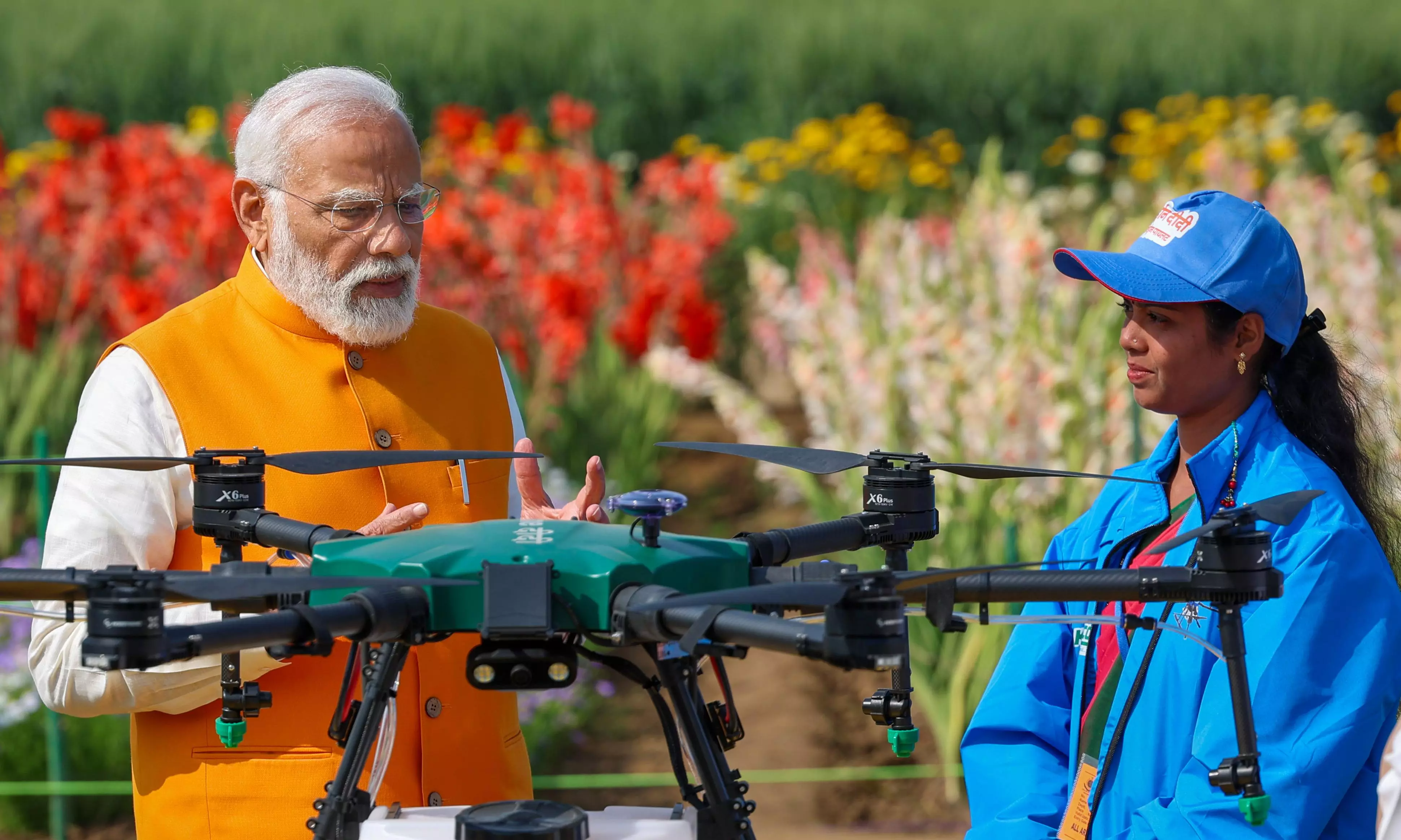
What is Namo Drone Didi scheme? How will it empower rural women?
Rural women beneficiaries are trained to become drone pilots; they can use the scheme for their income and also help the farm sector by enhancing productivity

In an initiative which aims to empower rural women working in the agriculture sector, Prime Minister Narendra Modi on Monday (March 11) distributed drones to 1,000 ‘Namo Drone Didis’ from across the country. He was participating in an event at the Indian Agricultural Research Institute (IARI) in Delhi.
The women beneficiaries demonstrated their drone operating skills from 10 different locations simultaneously. The Prime Minister also saw drone demonstrations by women participants at IARI’s Pusa campus.
Here is a brief account of the scheme and how it is expected to empower rural women across the country.
What is Namo Drone Didi?
The initiative was launched by Modi on November 30 last year after his interaction with women beneficiaries of the Viksit Bharat Sankalp Yatra.
It aims to provide drones to 15,000 women Self Help Groups (SHGs) in the next two years to be rented out to farmers for agricultural purposes. The women beneficiaries are trained to become drone pilots under the initiative.
How will Drone Didis help farmers?
The trained women drone pilots will help farmers in various agricultural operations like fertiliser spraying, sowing seeds and crop monitoring. This will help rural women generate income by utilising their skills.
The initiative intends to modernise Indian agricultural practices and enhance productivity by placing the cutting-edge technology at the disposal of rural women.
How will it empower rural women?
The scheme will cover 15,000 women SHGs, to be identified from among 89 lakh SHGs formed under the Centre’s Deendayal Antyodaya Yojana, and will provide them a sustainable business model and livelihood support.
The Centre will provide each SHG identified a subsidy up to 80 per cent towards the cost of a drone or a maximum of Rs 8 lakh. It is expected to generate an additional income of about Rs 1 lakh per head for them.
How much does a drone cost?
A drone cost around Rs 10 lakh, and after 80 per cent financial support from the Centre, SHGs can seek a loan for the balance 20 per cent from banks at subsidised interest rates to buy drones and deploy them with the help of trained women drone pilots.
Under the scheme, representatives of women SHGs will be provided 15 days of training, five days training for operating a drone and the rest for nutrient and pesticide application. After the training, the representatives will become qualified Namo Drone Didis.
The scheme will be implemented in areas where operating drones is economically feasible.
What did Modi say?
According to a PIB statement, the ‘Namo Drone Didi’, along with ‘Lakhpati Didi’, initiative is “integral to the Prime Minister's vision of fostering economic empowerment and financial autonomy among women, especially in rural areas”.
Emphasising the benefits of the initiative and the role of women SHGs, Modi said, “In the coming years, drone technology is going to expand in the country. Innumerable avenues are going to open up for the 'Namo Drone Didis' in the country. In the last 10 years, the way Self Help Groups have expanded in the country is a matter of study. SHGs in India have created a new history in area of women empowerment."
Initially, the programme was called ‘Drone Didi’ but was rechristened ‘Namo Drone Didi’ later on.

